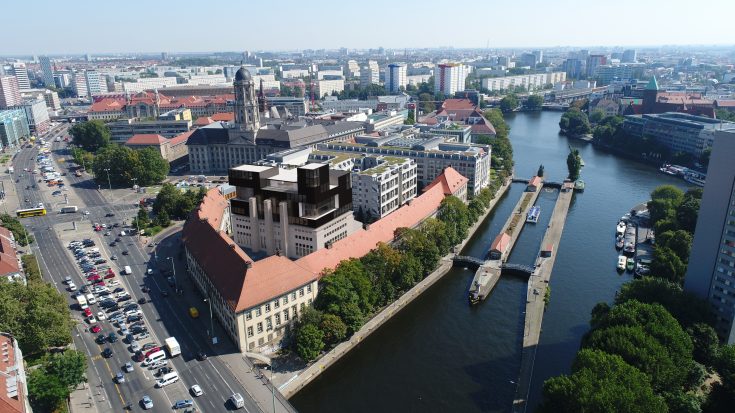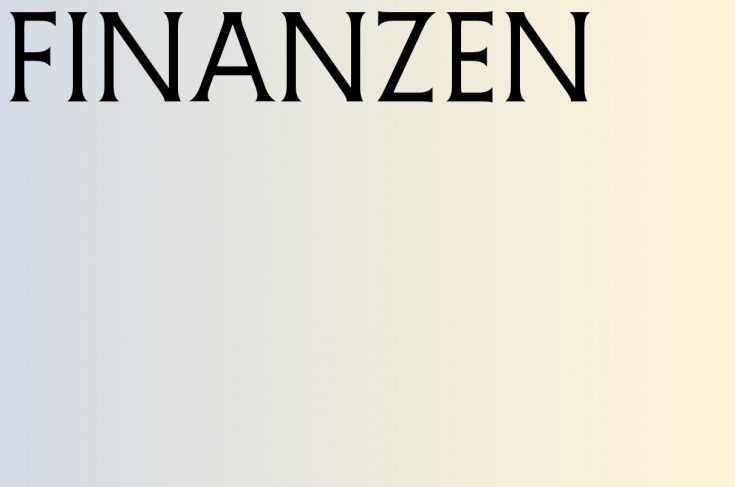The Gipsformerei is one of the few (and leading) plaster mould shops in the world. How did it come about that this Berlin institution was able to position itself so clearly internationally?
The Gipsformerei is over 200 years old. At that time it was common for large museums to run their own plaster mould shops. This was for economic reasons — people wanted to multiply things — but also to facilitate the exchange of objects. The esteem in which replicas were held varied. The Neues Museum, for example, was built specifically for casts, while Humboldt was of the opinion that casts did not belong in a museum. In other cities, due to the differing esteem in which they were held, the museum foundries eventually abolished the casts. The casts lost their importance. But they have significance: a casting is like a contemporary witness that we as plaster moulders bring to life. We are the ones who have preserved this craft to this day in its entire breadth.
For what reasons?
In Berlin, there was no casting collection after the war. It was slowly built up here, and this gave rise to great esteem.
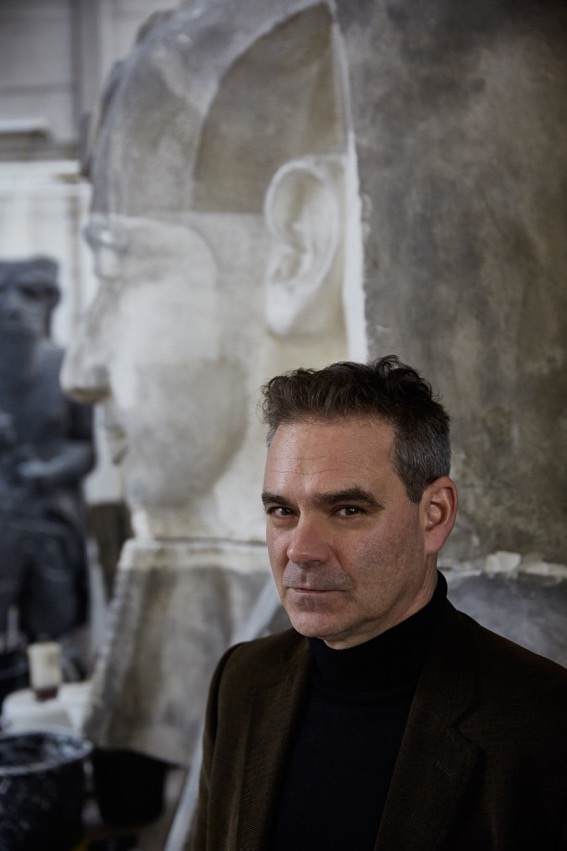
Which other plaster mould shops are internationally relevant?
The Louvre in Paris has more objects than our Berlin institution, as the Louvre was founded earlier. The strategic direction, however, is a different one; it’s more about small objects for museum shops that are produced there. Well, who actually knows us? We would like the people of Berlin to know us better, but our customers are institutional institutions, museums...
...Jeff Koons too ...
Oh, yes, he had previously made contact with Paris and Brussels. There is a large collection in Brussels, but he didn’t find what he was looking for. Copenhagen no longer has staff, only the collection, London no longer either. So Jeff Koons finally ended up with us.
What role does your large archive play? I’ve been told it’s enormously extensive.
In the meantime, we have the largest archive collection in the world, because we keep all the objects. Others have over 500 objects in their program, with us rather 7000 plus.
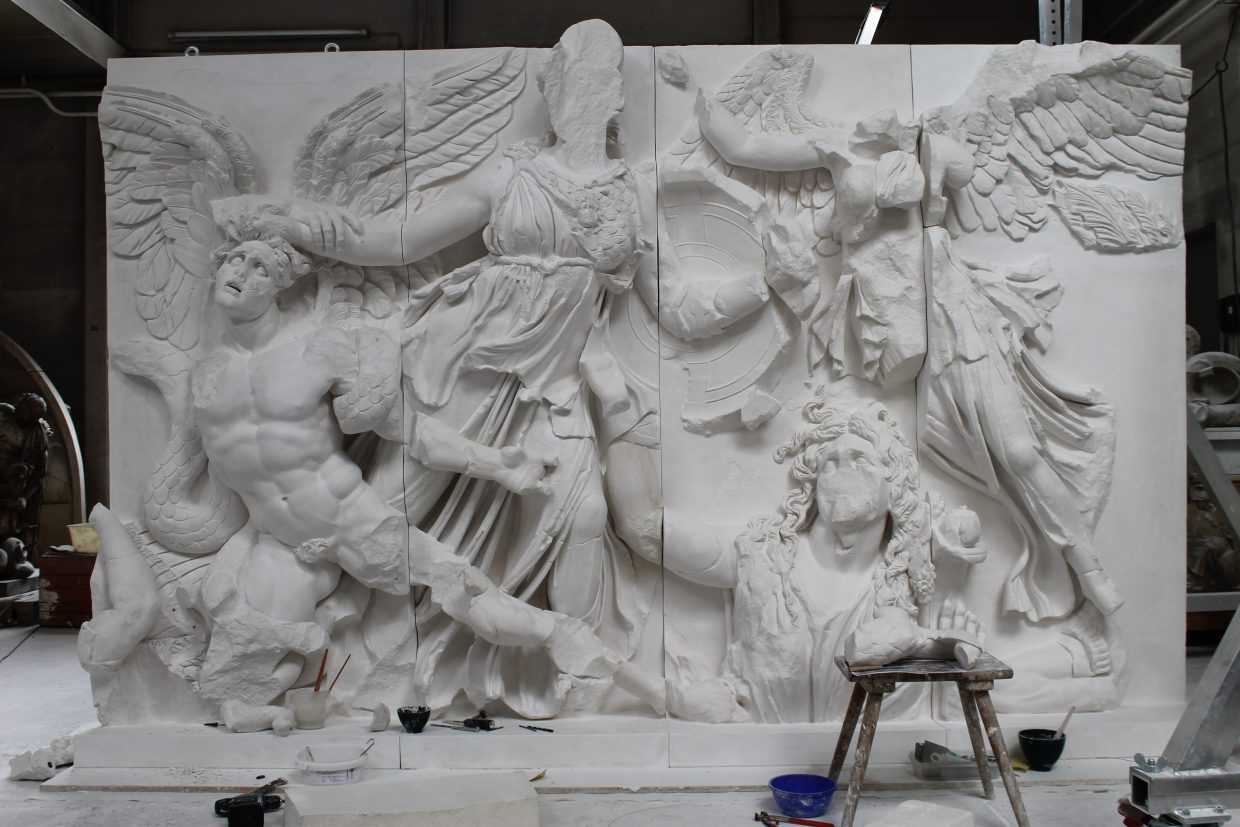
There’s a big difference here.
Yes, but the question is what is behind the number. Probably we have even more, because there are still things we haven’t really explored, sometimes very small forms, in the size of fingernails... but then of course again very large objects like the Pergamon frieze — oversized things. This is yet another speciality that we have, the focus is on large orders, because we are particularly good at that.
How does the quality of a plaster cast differ? Is the difference in the plaster itself, in the production?
The types of plaster play a role, yes, but they are not the greatest challenge. This is because we find the right balance in the treatment of our moulds. Our historical forms are on the one hand museum objects, but at the same time also means of production. With every use there is wear and tear that must be kept to a minimum. This is the responsibility we have to ensure that the attention to detail is maintained in subsequent production.
What do you do when you reach the point where the mould has to be renewed or production has to be stopped?
We have several options. Either we lock the mould and stop using it, or we look for other ways to reactivate it. The problem is that with very complicated moulds, additives such as beeswax used to be added to make them more flexible, but after 150 years the moulds are no longer as stable.
Who makes these forms for you?
We basically live from moulds that were bought 150 — 200 years ago or that we produced here at that time. We only make core moulds ourselves, but only a few a year so as not to forget the craft.
Contemporary moulds come from external clients?
Exactly. Jeff Koons had sent extra material from New York, hard gypsum, which we couldn’t have used in the moulds because they were broken. That’s why we made new moulds. Jeff Koons basically came to us because of the surface quality, because it’s much better here than elsewhere. We didn’t know that until now either.
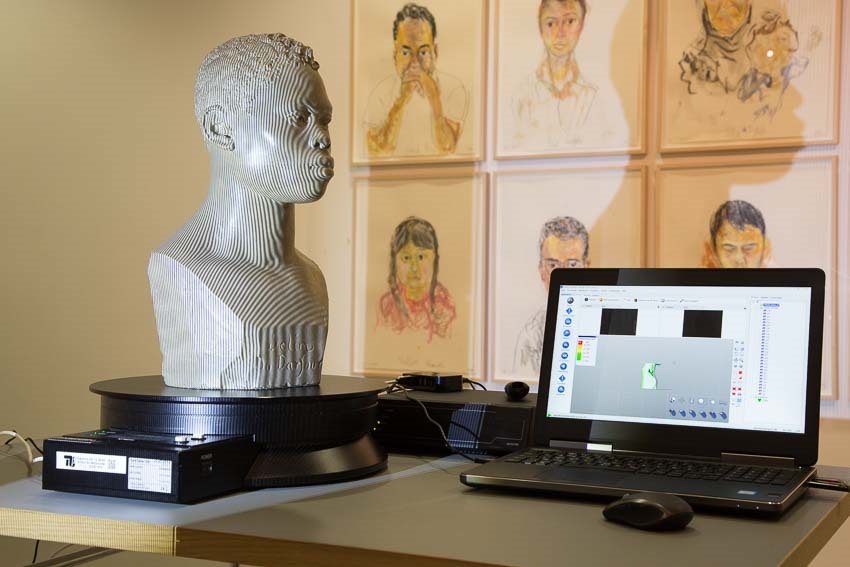
Were there any other “high performance projects” from recent times?
The Great Elector who went to Mexico. He is 4.20 meters tall, designed as a bronze.
Why do the Mexicans want the Great Elector of all people?
Interesting question. He has never been to Spain or Mexico and has no corresponding connection there. The Museo Internacional de Barrocco in Puebla, that’s how I understood it, simply wanted a special sculpture. They also have the Count of Sweden with waving flags. This is a modern, visually and digitally oriented museum, they probably wanted some great sculptures. Anyway, it was a big challenge for us to deliver it there undamaged, it was too big, you had to divide it into three parts, build it up so that none of the visitors could see it during the exhibition.
What new technologies are helping?
We worked 150 years ago. But we’re often asked what Gipsformerei 4.0 looks like. The answer is relatively simple: our treasure is the preserved historical forms. This is an analogous storage of corresponding templates. Digitization brings an additional technology that has its own specific advantages in approaching originals without touching them.
With your focus you could of course be a driver of innovation. What would be the benefit for the plaster mould shop?
It’s only a matter of time before this technology will show its full potential. How can we transfer craftsmanship into the digital? I am firmly convinced that the craft knowledge and skills, the analogue perspectives, can be transformed into the digital. It can be very interesting to take on the change of perspective from both sides, the analogue perspective and the digital one, and thereby gain new insights. There I would find it exciting to work with institutes that deal with 3D printing.
Has the Gipsformerei ever worked on a research project in this direction?
We connected the techniques with each other in an Achill figure by Tieck. It was missing from our collection, but it was also available in Potsdam and Weimar. In Potsdam the foot with the Achilles’ heel was missing and the spear; the Weimar was complete, but the surface quality was worse because it had been painted over. So we went to Weimar with the TU, scanned the heel and the other missing elements there, made a normal impression of the Potsdam part and finally combined the two. The complete figure was better than the fathers.
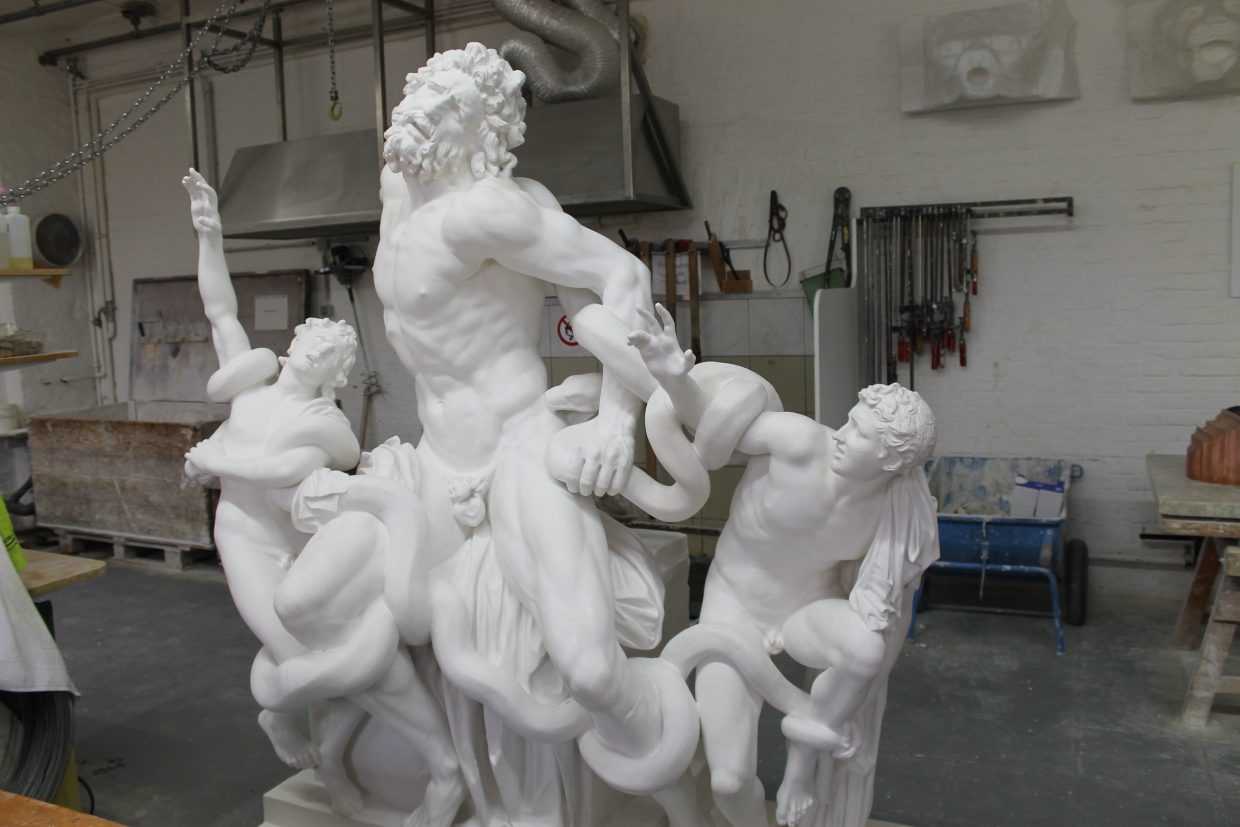
Was the joining a digital process or a manual one?
Both. The next step is to go even further and implement this analog knowledge into the digital process.
How can that work?
For example, someone could make an analog impression of something, produce the core piece in various small parts and look at each individual surface individually, analyze its structure and event. Then he looks to see which analog technique gives the best result. With the digital, it’s different: you scan first and the computer assembles a model. From our point of view, you would then have to develop a digital model and each individual part and then assemble the individual components.
So to adapt the scan to the human eye?
Exactly.
This is very exciting, especially to see what the technology can do in the finish to incorporate the human patina.
After all, our task is to maintain the inventory and preserve new cultural assets. But that doesn’t mean we can’t add new things, and 3D printing in particular can be very interesting for us here. You can also use this technology, for example, to restore a shape with a faulty piece. Then you can add the printed part to this figure. This is then not only reproduction, but also restoration.
Apart from the historical works and the restorations: is there also a shop with new forms? Or is a case like that of Jeff Koons an isolated one?
He wanted to have things that are in our inventory.
He didn’t modify them?
No, he just added things.
So it never happened before, for example, that an architect came to the plaster workshop and wanted new forms for architectural elements in the aesthetics of a wall relief?
No, we don’t do new things. We take up new things. We are a museum institution, that is, we try to preserve the things we have and to reproduce them as faithfully as possible. Nor do we make any reductions or enlargements. We only make original sizes, unless there are historical reductions that are already in the inventory.
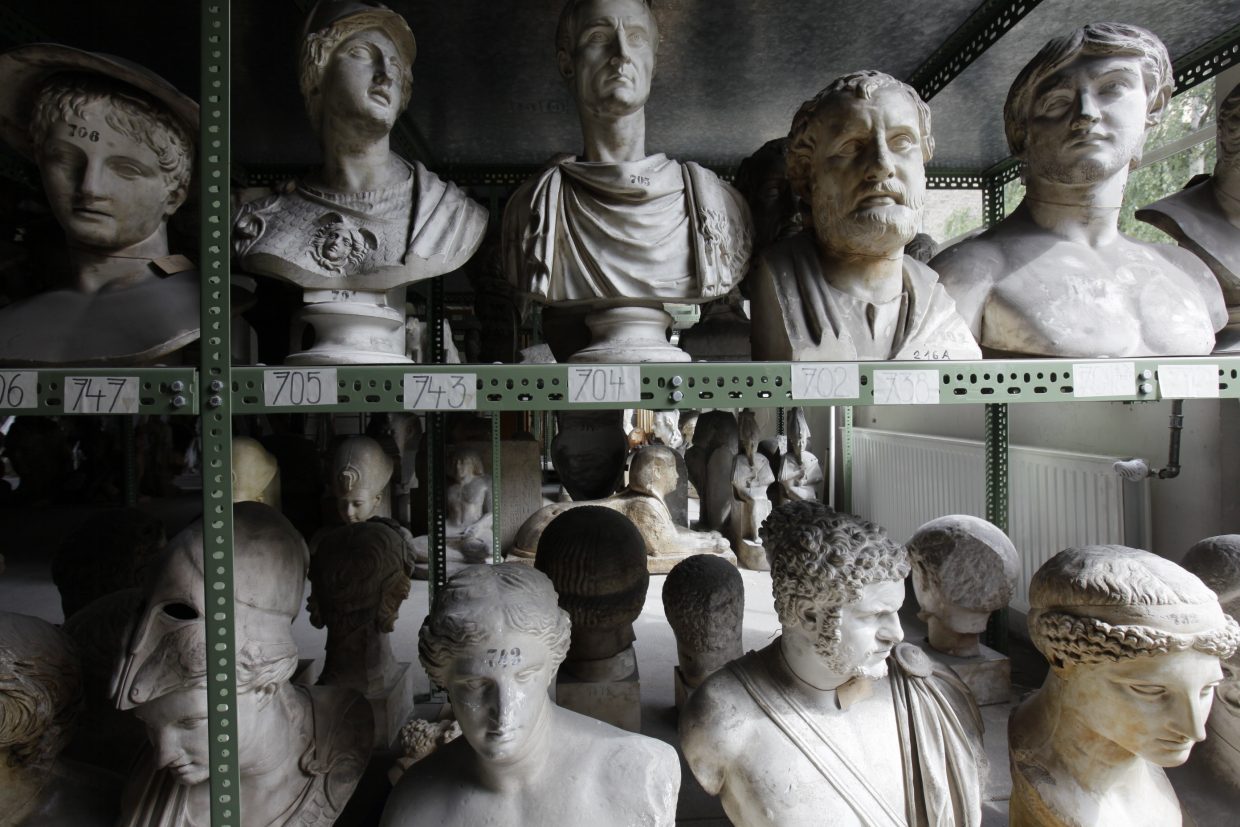
From which countries do most inquiries actually come? The Top 5?
This differs much too much from year to year to be able to draw up a list. China, yes, Iraq, Venezuela, Argentina, Russia, Poland, Finland — actually from all countries. We are also constantly amazed at how well we are known.
Let’s take a look at the future: What will the plaster mould shop look like in 10 years?
Well, first of all, I hope that we will continue to cultivate our roots, keep them and reactivate them again and again. My second topic is the transfer of the plaster workshop into the digital age. We must seize our opportunity, we can really be an international pioneer at this point.
When we think about the future, we think reflexively of young people: How does the Gipsformerei get good employees, young talents?
We don’t have any fluctuation, the people who are here don’t go. The profession closest to our work is plastering. But the plasterers no longer learn what is mastered here. That’s why we’re talking to the Chamber of Commerce and individual plastering companies. We want to build or initiate a network in which these professions can be well learned and trained again. We don’t want to hide our knowledge either.

